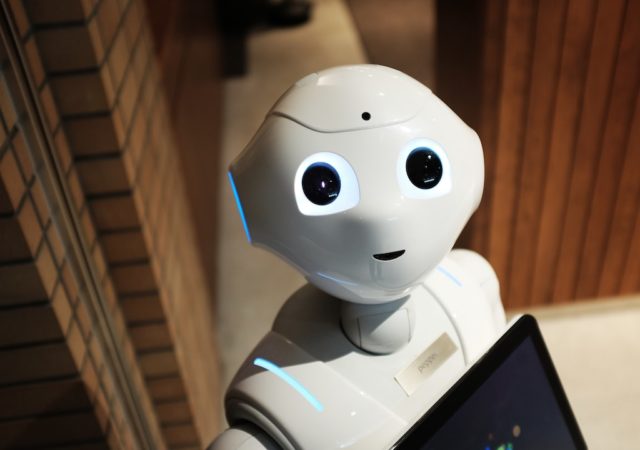Technology has revolutionized many aspects of our daily lives, and education is no exception. The traditional classroom model, where a teacher stands at the front of a room delivering lectures to passive students, has been the norm for decades. However, technology is changing the way we learn and is bringing about more interactive and engaging modes of education. In this blog post, we will explore the different ways technology is transforming the classroom.
Mobile Learning
Mobile learning, or m-learning, refers to the use of mobile devices like smartphones and tablets to facilitate learning. The benefits of m-learning include increased flexibility, accessibility, and convenience. Students can access educational content anytime and anywhere, empowering them to take responsibility for their learning. However, m-learning also has its limitations, such as the potential for distraction and limited interactivity.
One real-life example of m-learning is Duolingo, a language-learning app that has been used by millions of people worldwide. Duolingo provides gamified language lessons that are personalized to the individual’s learning pace. The app also uses algorithms that adapt to the user’s learning style and consistently tracks their progress. Duolingo’s success has proven that mobile learning can be both engaging and effective.
Gamification
Gamification involves using game elements like points, badges, and leaderboards to motivate and engage learners. The benefits of gamification include increased enjoyment, motivation, and interactivity. Games can also provide stimulating, safe environments for learners to explore and practice new skills. However, it is essential to use games that align with the learning objectives of the course and avoid games that distract from the subject matter.
An example of gamification in education is the online game “Mathletics,” which has been used by millions of students worldwide. Mathletics provides personalized and adaptive math lessons through a fun, game-like interface. The game’s leaderboards and achievement badges motivate students to engage with the material and improve their math skills.
Virtual/Augmented Reality
Virtual reality (VR) and augmented reality (AR) are technologies that simulate either a physical environment or provide a digital overlay on top of the physical world. The benefits of VR and AR in the classroom include increased engagement, visualization, and interactivity. Using these technologies, students can experience real-world scenarios in a safe and controlled learning environment. However, implementing VR and AR can be expensive and logistically challenging.
One example of VR in education is the virtual dissection table. This tool allows learners to dissect digital specimens in a virtual environment, substituting traditional dissection methods that are sometimes problematic due to ethical and ecological concerns. An example of AR in education is the use of AR apps to enhance textbooks. With an AR app, scanning a picture or text can provide additional context and interactivity, such as launching a video or 3D image.
Social Media
Social media has become an essential part of our daily lives, and that is no different for education. In the classroom, social media can facilitate collaboration, networking, and provide a platform for teachers to connect with students outside the classroom. The potential downsides of social media in education are privacy, cyberbullying, and distraction. Therefore, it is essential to balance the benefits with the potential risks.
A popular social media platform in education is Edmodo, which connects students and teachers in an online community that parallels the classroom experience. Edmodo allows for sharing of educational resources, discussion of relevant topics, and provides messaging and notification systems for assignments and deadlines.
Adaptive Learning
Adaptive learning provides personalized, targeted learning experiences that cater to learners’ individual strengths and weaknesses. Adaptive learning uses data-driven analytics to track students’ progress and adjust content to their needs. The benefits of adaptive learning include increased efficiency, personalization, and effectiveness. Still, it also requires robust data analytics software and content that is accurate and adaptive.
One example of adaptive learning is Khan Academy, a non-profit platform that provides adaptive lessons and quizzes for a variety of subjects. Khan Academy’s adaptive system adjusts the difficulty of the questions based on the student’s performance and provides personalized feedback to improve their understanding of the material.
Artificial Intelligence
Artificial intelligence (AI) is the simulation of human intelligence in machines that can perform complex tasks that usually require human intelligence, such as speech recognition, decision-making, and translation. AI in education has the potential to assist teachers in grading, providing personalized assignments, and helping learners with disabilities. Additionally, AI can assist in the development of learning technologies, such as learning management systems and educational chatbots.
In the future, AI may even personalize the physical classroom environment to students’ preferences and adapt to their individual learning styles. However, the successful implementation of AI in education will depend on data privacy, security, and transparency policies and research exploring AI’s ethical considerations.
Online Learning
Online learning, or e-learning, provides digital courses that can be accessed remotely via a computer, tablet, or smartphone. Online learning’s advantages include increased flexibility, access, and affordability. Online learning also allows learners to progress at their pace and provides learning opportunities for individuals who would otherwise not have access to education. However, online learning lacks the personal touch and motivation of an in-person classroom and requires self-motivation from the learners.
One example of online learning is Coursera, an online learning platform that provides courses and certifications from top universities worldwide. Coursera provides engaging and interactive courses in areas such as computer science, business, and social sciences.
Data Analytics
Data analytics involves analyzing vast amounts of data to identify patterns, trends, and insights that can be used to inform decision-making. In education, data analytics can provide useful information to educators about student performance, identify areas of strength and weakness, and improve learning outcomes. However, data analytics also requires ethical considerations, such as data privacy and cross-sectional data bias.
One example of data analytics in education is Blackboard Analytics, which analyzes data gathered by Blackboard Learning Management Systems. The software provides insights such as student performance, course quality, and engagement levels, which can be used to make data-driven decisions and improve learning outcomes.
Conclusion
Technology is changing the classroom in exciting and innovative ways, offering educators new tools to engage and motivate learners. E-learning, virtual reality, personalized learning, artificial intelligence, and gamification are transforming the classroom, bringing more interactive and practical learning experiences to students worldwide. As technology continues to evolve, we can expect to see more advancements in this area, giving students new opportunities to learn and engage with the world around them.
As educators, it is essential to remain curious and open-minded about all the ways technology can redefine classroom learning and teaching. Explore the impacts of virtual reality in the classroom. Learn how personalized learning can change the experience of a classroom. Understand how gamification can help technicians in training. Stay ahead of the curve and be aware of technology’s impact on education and the
keyword-rich future of e-learning, virtual reality, personalized learning, artificial intelligence, and gamification.





